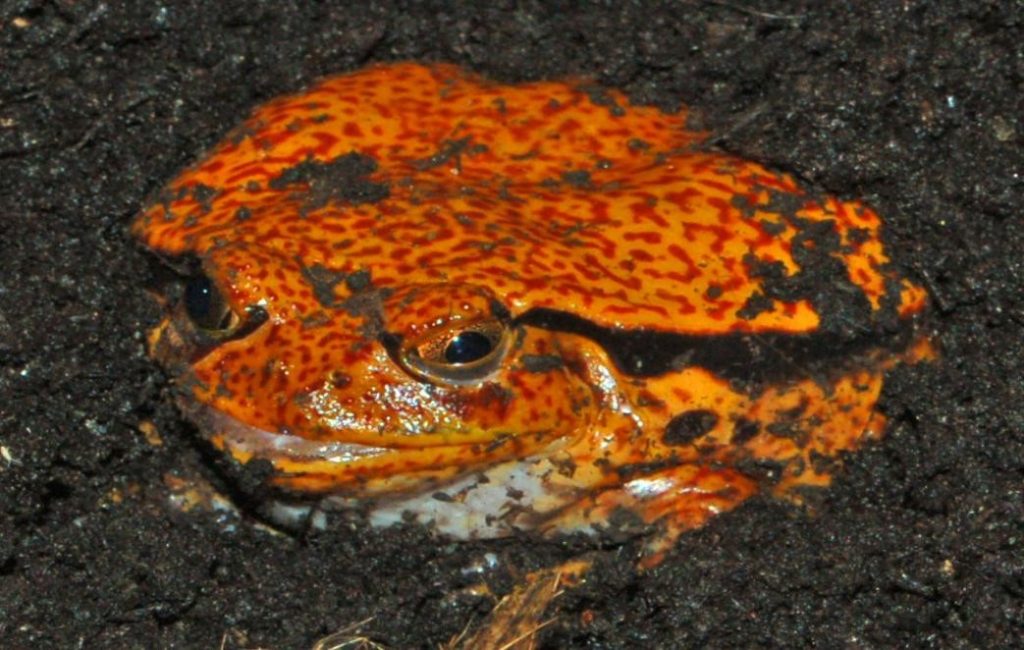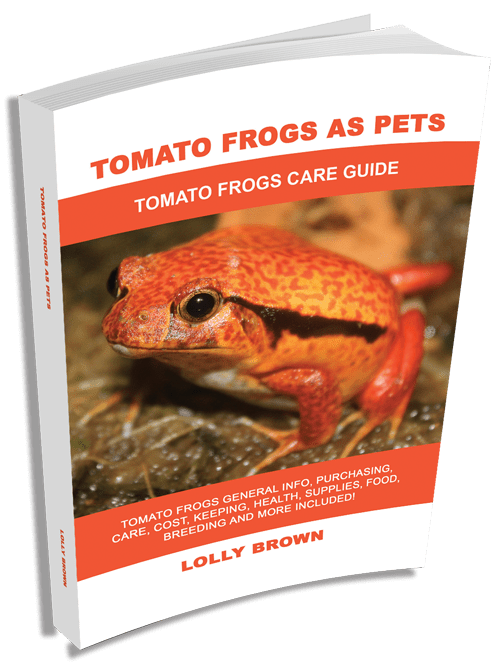CHAPTERS
Navigate to chapter
► Chapter 1: Biological Information
► Chapter 2: Tomato Frogs as Pets
► Chapter 3: Purchasing and Selecting a Healthy Breed
► Chapter 4: Habitat Requirements for Tomato Frogs
► Chapter 5: Nutrition and Feeding
► Chapter 6: The Life cycle of Tomato Frogs
► Chapter 7: Caring Guidelines for Tomato Frogs
► Chapter 8: Breeding Your Tomato Frogs
► Chapter 9: Common Diseases and Treatments for Tomato Frogs
► Chapter 10: Care Sheet and Summary
Chapter 1: Biological Information

Before having a conclusion that a Tomato frog is the ideal pet for you, you must first know what kind of amphibian you are about to handle. You must first gain knowledge on all the necessary information you need to know, from heritage down to its needs, in order to check if this is the best pet for you. Having a pet, in general, is a huge responsibility. Make sure that you are capable and ready in all aspect of your life in committing your time, effort, and care to this kind of pet
In this chapter, you’ll learn about the general information and biological facts of a Tomato Frog. A list of its sub-species will be given in order for you to choose what would best suit you and your family.
Taxonomy, Origin and Distribution
Tomato Frogs have a scientific name of Dyscophus antongilii.They belong in Kingdom Animalia, Phylum Chordata, Class Amphibia, Order Anura Family Microhylidae, Genus Dyscophus, and Species antongilii.
The natural range of Tomato Frogs is located exclusively on the island of Madagascar down the east coast of Africa. Records show that they are found specifically at Andevoranto, Fizoana, Iaraka, Rantabe, Maroanstreta, Voloina, and Antongil Bay.
It is the largest member among the Microhylid group of frogs. Primarily, they are terrestrial. They are usually found on vegetation, highly distributed urban areas, coastal forests, rain forest or forests that receive heavy rainfall whenever summer starts or in the latter part of spring. They prefer having stagnant or slow moving waterways and ponds around their area.
Tomato Frogs are nocturnal. It means that this type of frog is most active during the night. Most of the time, they spend the day burrowed under leaves and mud.
They are available throughout the year especially during early summer or late spring. Both wild-caught and captive-bred tomato frog shows up in pet trade.
Unfortunately, because of deforestation and an over-collection for the pet trade, this specie has become presently endangered.
Size, Life Span, and Physical Appearance
The name “Tomato” was based on their striking colors as females come in a bright red-orange while males have a duller skin that ranges from yellow-orange to brownish-orange similar to the color of a tomato fruit. Usually, their bellies are yellowish and there are instances that their back and throat have black spots. Their forefeet are not webbed and their hind limbs ‘webbing is not that pronounced.
Females grow larger than male. Adult males can grow as large as 2.5 inches while females can grow and reach 4 inches measuring from snout to vent. They can reach the size of an adult after a year if fed well. It takes a minimum of two years for a female Tomato frog to mature.
The average life span of Tomato frogs is 6 years but there are cases wherein they reached 10 years of age. If properly taken care of, their life span can actually be extended.
Sub – Species of Tomato Frogs
Tomato Frogs have three sub species. Read carefully and find out which type of tomato frog will best suit you and your family as well:
Continue Reading…
Want to read the entire thing?


